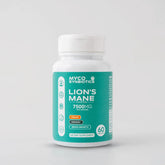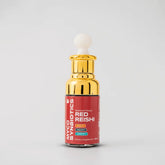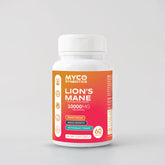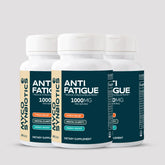🍄 MUSHROOM WELLNESSS
●
🇵🇰 PROUDLY MADE IN PAKISTAN
●
🌿 POWERFUL ADAPTOGENS FOR RESILIENCE AND VITALITY
🍄 MUSHROOM WELLNESSS
●
🇵🇰 PROUDLY MADE IN PAKISTAN
●
🌿 POWERFUL ADAPTOGENS FOR RESILIENCE AND VITALITY
Fruiting Body
- The thick walls of the fruiting body have prebiotic fiber that helps keep your gut healthy.
- Fruiting bodies also provide important nutrients like protein, fiber, vitamins, and minerals — though the exact amounts depend on the mushroom type and how it’s grown.
- They’re rich in bioactive compounds such as polysaccharides, indoles, polyphenols, and carotenoids, which have antioxidant and anti-inflammatory benefits.
- Fruiting bodies are a good source of major minerals like potassium, calcium, phosphorus, and magnesium, plus trace minerals such as copper, iron, selenium, and zinc, all while staying low in sodium.
- Some mushrooms even have active compounds in the fruiting body that aren’t found in the mycelium.
However, fruiting bodies do not contain the powerful extra-cellular compounds that mycelium produces.
Mycelium
- Mycelium has thin, porous cell walls that let enzymes move out and nutrients move in, making it easier for people to digest.
- It does most of the work in a mushroom’s life cycle — breaking down nutrients with enzymes, protecting itself from harmful organisms, and eventually growing the fruiting bodies. Even after the fruiting body is gone, the mycelium keeps living on.
- Growing mycelium on a solid substrate mimics its natural environment, helping it develop well. This controlled method also helps avoid contaminants, so there’s no need for harsh heat treatments that could destroy nutrients.
- Some types of mycelium have beneficial compounds you won’t find in the fruiting body. The organic mass (mycelial biomass) includes both the mycelium and its growth material, along with helpful substances like enzymes, polysaccharides, and protective compounds, which may support health.
- That’s why mycelium is often harvested to make dietary supplements and nutritious food additives.
Mushrooms often grow on organic oats or rice. The mycelium feeds on and breaks down these grains, using them to grow. By harvest time, both the fruiting body and mycelium have almost completely digested the oats, turning them into mushroom tissue and beneficial compounds.
This process means the final product includes:
myceliated substrate, a natural mix of mycelium and fully transformed oats.
- the fruiting body,
- the mycelium,
- helpful compounds like enzymes and polysaccharides,
- and the myceliated substrate, a natural mix of mycelium and fully transformed oats.
When we think of mushrooms, we usually picture the fruiting body — the stalk, cap, and gills we see above ground. But under the surface is the mycelium, a root-like network.
Both the fruiting body and mycelium have their own powerful compounds. In mushrooms like lion’s mane, some of these compounds are found only in the fruiting body, while others are only in the mycelium. That’s why to get complete benefits, it’s best to consume both parts together.
While the mycelium does have many helpful compounds, some important substances are found only in the fruiting body, or are present there in higher amounts.
For example, in reishi mushrooms, the mature fruiting body has more triterpenes, which help the immune system and reduce inflammation. That’s why to get the full antioxidant benefits, it’s best to use both the fruiting body and mycelium together.
Many people believe functional mushrooms can’t be grown safely in Pakistan, but that’s not true. Today, expert mycologists grow them on modern indoor farms with clean, controlled environments. These farms make sure the mushrooms stay pure and free from germs, chemicals, and dirt. Unlike some countries where mushrooms are often rejected due to harmful bacteria or pesticides, farms in Pakistan take extra care to grow safe and high-quality mushrooms—making them a reliable choice.
Not always. Many mushroom extracts use water decoction, or solvent extraction to pull out certain compounds. While this does capture some specific nutrients, it can also lose or leave behind other valuable bioactive compounds found in the whole mushroom. So extracts are helpful if you’re after targeted compounds only.
Whole mushroom powders are different. They’re made by simply drying and grinding the entire mushroom — including the fruiting body and mycelium. This gentle process keeps more of the mushroom’s natural goodness, like prebiotic fiber and a wide variety of nutrients, intact.
We add vegetable glycerin as a preservative after dual extraction. This carefully draws out a complete spectrum of beneficial compounds — giving you the full power of the mushroom.
- Choosing a selection results in a full page refresh.











